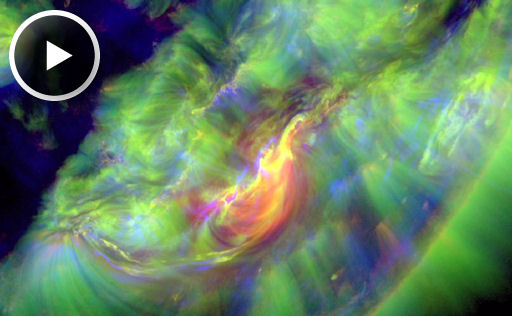![]()
Thirty-five new items have just been added to our Meteorite Jewelry collection. Browse the Space Weather Store for something out of this world.
![]()
THE PERSEID METEOR SHOWER STILL UNDERWAY: Earth is passing through a stream of debris from Comet Swift-Tuttle, source of the annual Perseid meteor shower. Worldwide observers are now reporting more than 120 Perseids per hour. Forecasters recommend looking during the dark hours before dawn when activity is expected to be highest.
Last night in Groveland, California, amateur astronomer Rick Whitacre photographed a flurry of Perseids over Pine Mountain Lake:
"On August 12th, I set the camera out and let it run from midnight to dawn," says Whitacre. "This composite image of the Perseids I recorded demonstrates how the meteor shower originates in the constellation Perseus."
Realtime Perseid Photo Gallery
Got clouds? Tune into SpaceWeather Radio for live echoes from Perseid meteors flying over the US Space Surveillance Radar in Texas.
If you're out looking for Perseids before sunrise on Monday, Aug. 13th, face east. The crescent Moon and Venus are in conjunction right in the middle of the meteor display. It's a beautiful way to begin the day. [sky map]
M-CLASS SOLAR FLARE: Sunspot AR1540 erupted on August 11th, producing a long-duration M1-class solar flare that peaked around 1220 UT. NASA's Solar Dynamics Observatory recorded the extreme ultraviolet flash:
Updated: The explosion hurled a faint cloud of plasma into space. The CME is not, however, heading for Earth. Our planet should feel no effects from the explosion. Solar Flare alerts: text, phone.

![]()
Solar wind
speed: 451.8 km/sec
density: 0.6 protons/cm3
explanation | more data
Updated: Today at 1526 UT
![]()
X-ray Solar Flares
6-hr max: C2 1240 UT Aug13
24-hr: C2 1240 UT Aug13
explanation | more data
Updated: Today at: 1500 UT
![]()
![]()
![]()
Daily Sun: 13 Aug 12
![]()
![]()
Solar activity is low. These sunspots have simple magnetic fields that pose no threat for strong flares. Credit: SDO/HMI
![]()
![]()
![]()
Sunspot number: 76
What is the sunspot number?
Updated 13 Aug 2012
Spotless Days
Current Stretch: 0 days
2012 total: 0 days (0%)
2011 total: 2 days (<1%)
2010 total: 51 days (14%)
2009 total: 260 days (71%)
Since 2004: 821 days
Typical Solar Min: 486 days
Update 13 Aug 2012
The Radio Sun
10.7 cm flux: 112 sfu
explanation | more data
Updated 13 Aug 2012
![]()
![]()
![]()
Current Auroral Oval:
![]()
Switch to: Europe, USA, New Zealand, Antarctica
Credit: NOAA/POES
![]()
![]()
![]()
Planetary K-index
Now: Kp= 2 quiet
24-hr max: Kp= 3 quiet
explanation | more data
![]()
Interplanetary Mag. Field
Btotal: 5.9 nT
Bz: 4.3 nT north
explanation | more data
Updated: Today at 1527 UT
![]()
![]()
![]()
Coronal Holes: 13 Aug 12
![]()
![]()
A solar wind stream flowing from the indicated coronal hole should reach Earth on Aug. 18-19. Credit: SDO/AIA.







